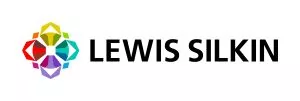There is no doubt that technology has been the fastest evolving element we have seen in offices. Remote working forced a switch to the use of virtual technologies for staff and organisations alike. IT departments had to respond to the challenge in order to keep business running and to bridge the gap between commercial and domestic data networks.
Shopping became virtual, transactions were processed in their millions in remote clouds and face to face meetings were reduced to pixel versions of their former selves. Our reliance on technology has never been so critical. It is conceivable that we have seen ten years of accelerated change in an 18 month period.
What lessons has this taught occupiers about their needs on returning to the office? How can technology be deployed to enable companies to be agile and optimise workplace efficiency?
In the short-term, technology will be crucial in managing the return to workplace. If staff surveys are to be believed, there is a preference to work remotely for at least part of the week, most however are opting for midweek office attendance. This is indicating a trend towards the 'bell-curve' of occupancy with a peak on Wednesdays and low occupancy on Mondays and Fridays, albeit this may change as offices, and the services nearby begin to open up once more. Team coordination planning, room and desk bookings and check-in apps will come into their own in facilitating this. It will, however, be far simpler for these to be used if they can be integrated with the Building Management System (BMS) and landlord-controlled systems, like access control.
Occupiers may find future benefits in understanding staff attendance trends and patterns through presence detectors; devices that provide feedback on desk and room usage. The data from these can also inform the BMS on when and where to turn on lights, provide more or less fresh air and even inform the staff restaurant how many lunches are needed on any given day of the week.
But for these systems to work effectively, they need to be complementary and integrated. There are numerous instances of BMS having operating systems and software that are incompatible with occupiers' systems. This is one area where landlords and their tenants can set out clear parameters about what is being provided and what is actually wanted.
Another important consideration for organisations reoccupying premises, is the need for flexibility. It is likely that they will need to alter and adapt work-settings as the new workplace norms evolve and settle. Fixed cabling makes this more difficult to achieve and the provision of building-wide, Wi-Fi-enabled floorplates will underpin agile reconfiguration, without major time investment and cost implications.
This raises the question of what is provided as part of the landlord's building infrastructure. Does the Wi-Fi system become part of the base level provision and rentalised? Given the pace of change we have seen (and can expect in the future), it would also be sensible to ensure services risers, comms facilities and intelligent building systems have the capacity to grow and change. This, along with the aforementioned building control systems, has a commercial value. They take up floor space and eat into net-lettable areas, and no doubt A grade premises offering this level of provision will command a premium in lease terms.
Will this level of provision raise the bar of standard provisions in commercial premises, with an expectation that the landlord would just have to provide them to keep premises relevant and competitive? Landlords and fund managers are not likely to be in favour of diminished returns through spending more on development and infrastructure, without a commensurate uplift in income.
Technology is not only relevant at the building management, and operations, level. Today's workforce is tech-savvy and employers can harness this familiarity to further enhance the employer/employee relationship. Staff apps are valuable in improving the workplace experience, staff engagement and ease of communication.
Companies have adopted and promoted numerous tools in this regard. Health apps can monitor your steps and link them with a daily air-quality report; you can track and coordinate attendance with your team; use concierge facilities for restaurant and bar bookings; grab a slot in the gym and arrange a collection of your dry-cleaning. These are all things that can make life easier.
These apps also extend to local business networks where event notifications, discounts and promotions come straight to the employee's mobile phone. This is relatively easy and cost effective to roll out but has a great impact on engagement and trust.
If the landlord is part-curator of the workplace building experience, do these initiatives and services form part of the base offering? Do they start to become a differentiator in premises selection?
As part of the bigger picture, would landlords and developers benefit from sharing the data from premises, smart buildings, green systems and the extensions of technology that occupiers find most attractive and useful? This could start to determine new universal standards and best practice models across the sector, whereas at present it underpins the competitive advantage that each player is seeking.
The content of this article is intended to provide a general guide to the subject matter. Specialist advice should be sought about your specific circumstances.

